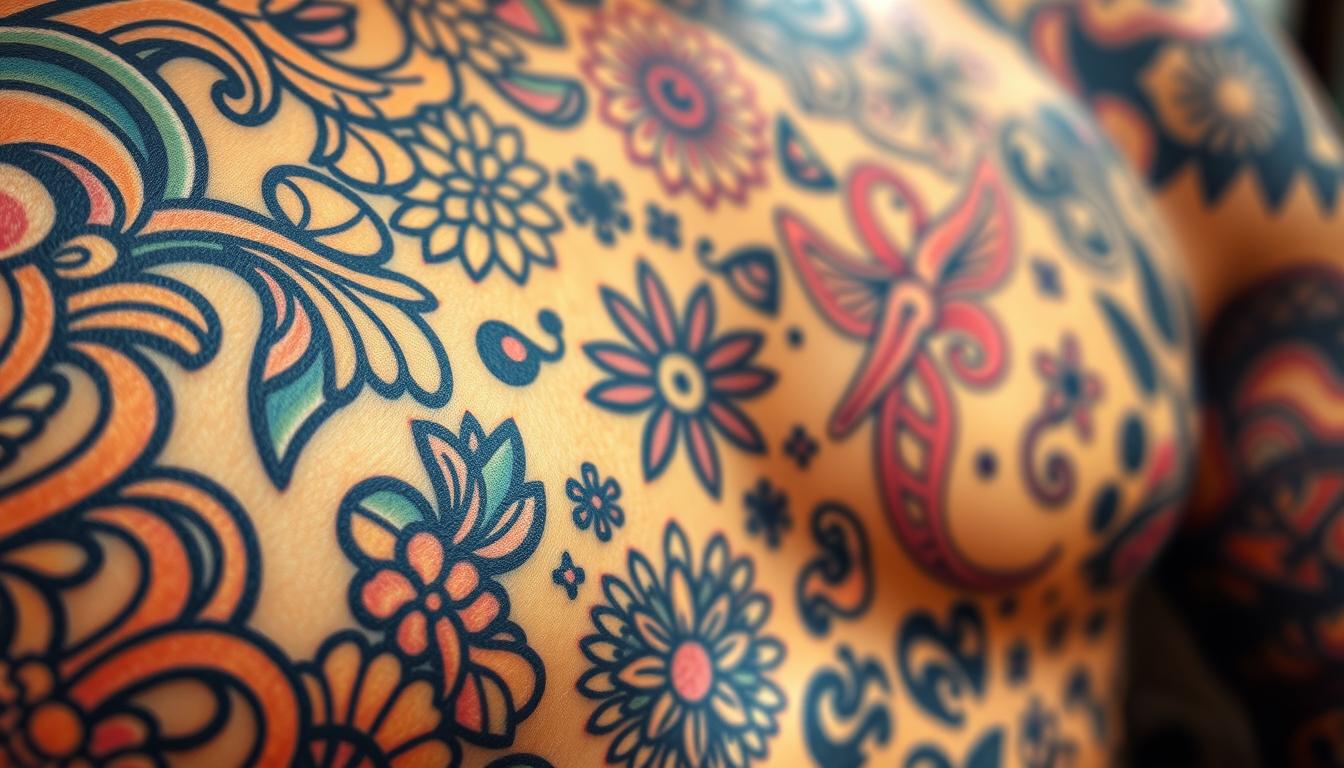
Polynesia gave the world more than stunning landscapes—it introduced the art of body ink we now call tattoo. Derived from Tahitian “tatau” and Hawaiian “kakau,” this practice carries centuries of spiritual meaning. Far from mere decoration, these designs connect wearers to ancestral stories and community identity rooted in Hawaiian culture.
When Captain James Cook’s crew returned from the Pacific in 1769, they brought tales of intricate body tattoos resembling living lace. Yet Hawaiian kakau stood apart—a sacred tradition nearly lost before its modern revival. Unlike other Polynesian styles, these patterns served as spiritual maps, guiding wearers through life’s challenges.
Today’s enthusiasts discover more than aesthetics in these symbols. Each curve and dot reflects heritage, with meanings tied to protection, genealogy, or personal growth. Choosing these motifs requires understanding their cultural weight—they’re not just art, but conversations with history.
Key Takeaways
- Hawaiian tattoo traditions date back over 1,000 years with unique spiritual purposes
- Designs like kakau differ from other Polynesian styles through their sacred symbolism
- Modern revivals blend ancient techniques with contemporary body art practices
- Patterns often represent personal journeys or connections to ancestral wisdom
- Cultural respect remains essential when considering these meaningful designs
Understanding the Heritage of Hawaiian Tattoos
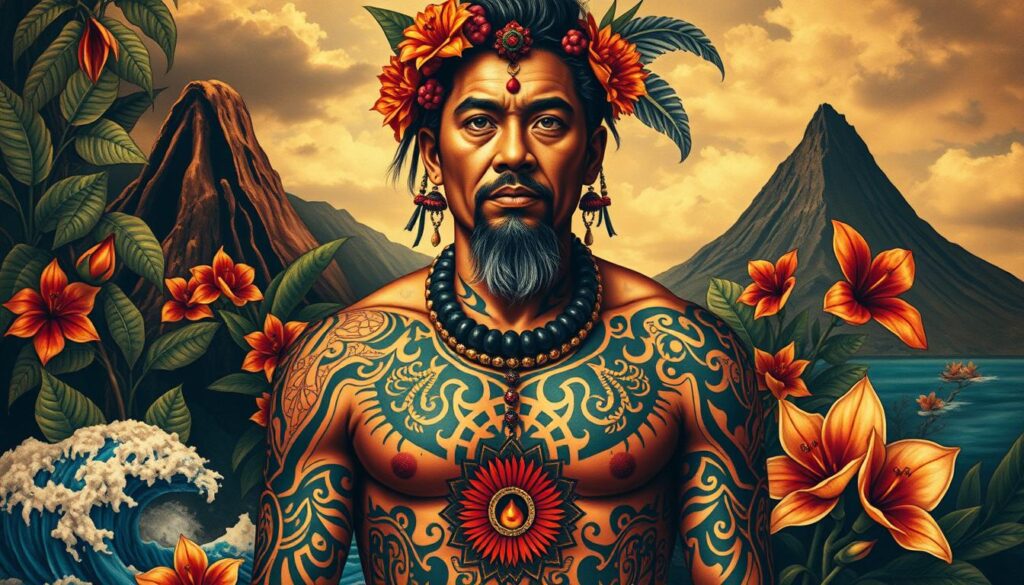
Body art in the islands carries rhythms older than memory. For over a thousand years, skilled practitioners used tools made from nature to imprint sacred patterns. These marks weren’t just skin deep—they mapped family lineages and spiritual journeys.
The Historical Roots and Cultural Tradition
The word kakau literally means “to strike and place,” describing the ancient method. Artists used bone needles and plant-based inks, tapping designs with a wooden mallet. This process created heritage markers that identified roles in society—from fishermen to chiefs.
Traditional Tapping vs. Modern Tattooing
Today’s electric machines work faster, but traditional methods create deeper connections. Hand-tapped designs take 3-5 times longer to complete, blending pain with spiritual intention. Practitioners like Keone Nunes revived these techniques after studying with Samoan master artists.
| Aspect | Traditional Kakau | Modern Methods |
|---|---|---|
| Tools | Bone needles, plant ink | Steel needles, synthetic ink |
| Time Required | 40+ hours | 5-15 hours |
| Cultural Role | Spiritual ceremony | Personal expression |
| Sound | Rhythmic tapping | Machine buzzing |
This story of revival shows why cultural respect matters. Each tap honors ancestors while keeping traditions alive for future generations.
Innovative “hawaiian tattoo ideas” for Your Journey
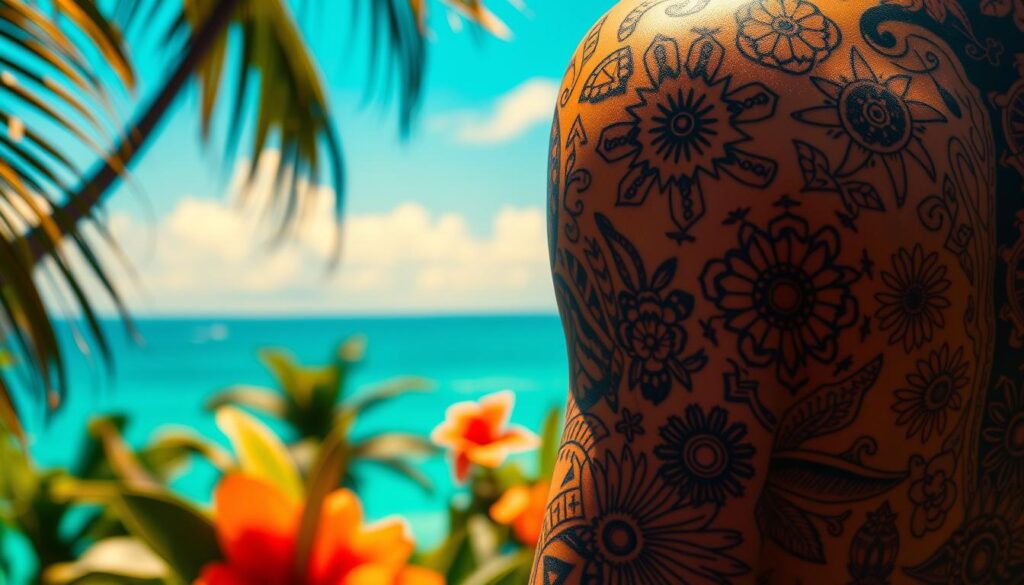
Your skin becomes a canvas for ancestral wisdom when choosing these cultural symbols. Modern interpretations blend time-honored patterns with fresh artistic approaches, letting you carry heritage forward in meaningful ways.
Exploring Unique Designs and Patterns
Consider these striking motifs for your body art:
- Maka ihe (spear tip): Embodies your role as protector
- Niho niho triangles: Form defensive barriers through geometric precision
- Shark teeth patterns: Connect to guardian spirits while offering spiritual armor
Interpreting Cultural Symbols and Meanings
Each element tells its own story. The red-tailed tropicbird guides wanderers home, while octopus tentacles symbolize knowledge-seeking. Woven pawehe designs showcase your talent for uniting people.
Animal motifs carry particular weight. Owl imagery might honor family guardians, whereas shark elements channel both protection and oceanic connections. These symbols transform personal experiences into visual narratives etched in ink.
Design Elements and Artistic Patterns
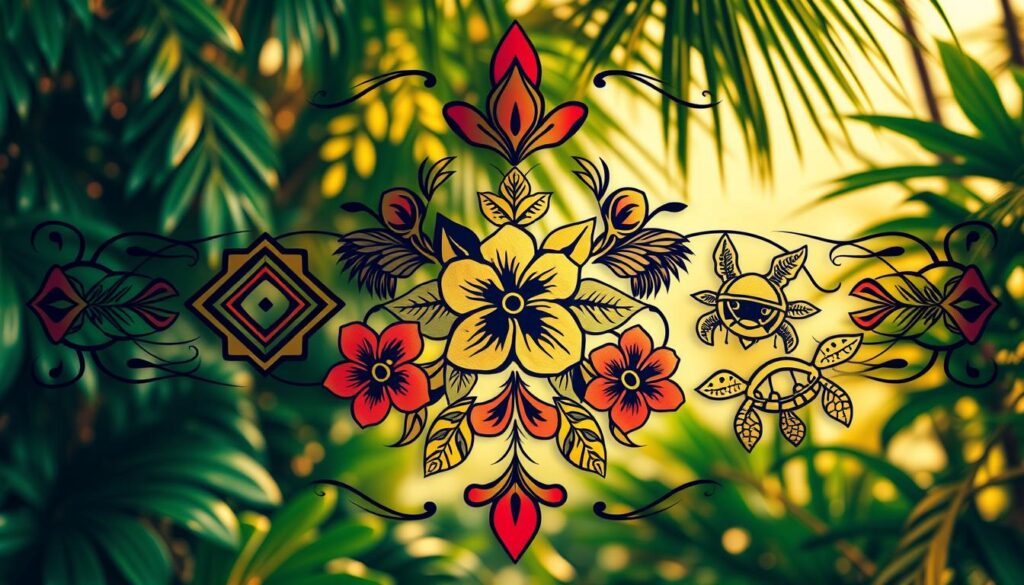
Every curve in traditional body art whispers stories of land and sea. These designs act as visual dialects, blending occupational symbols with nature’s blueprint. You’ll find ancestral wisdom encoded in every angle and wave.
Symbols That Speak Through Generations
Canoe builders often chose paddle motifs to honor their kuleana—their responsibility to community travel. Farmers might select taro leaf patterns, while fishermen preferred hook symbols. These markers weren’t just decorative; they declared one’s role in island life.
Placement follows sacred geometry. Traditional artists inked legs first—men’s designs climbing the outer thigh, women’s gracing the inner calf. This asymmetrical approach mirrors divine balance, connecting wearers to both earth and sky.
Nature’s Blueprint in Body Art
The ocean’s rhythm shapes many patterns. Curving waves might symbolize life’s constant motion, while shark teeth form protective barriers. Even plant fibers inspire intricate lines representing growth and connection.
Geometric shapes hold hidden meanings. Triangles could mark volcanic peaks, while interlocking circles might depict family bonds. Nothing’s random—each element maps personal journeys through culture’s lens.
Your chosen symbols become living heirlooms. They carry the weight of centuries while charting your unique path forward.
Navigating the Tattoo Shop and Studio Experience
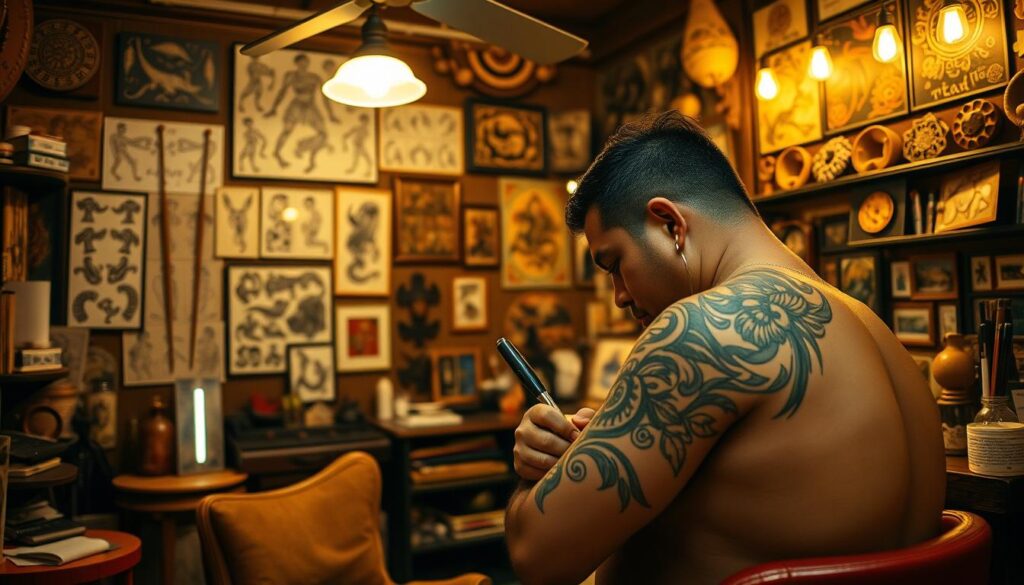
Walking into a cultural body art space feels different than standard studios. The air hums with ancestral reverence as artists prepare tools and share stories. This environment prioritizes education alongside creativity.
What to Expect at a Traditional Hawaiian Tattoo Shop
Your journey begins with consultation, not needles. Practitioners like Samson Harp – whose facial maka marks his cultural role – discuss designs for weeks before inking. Many locations require multiple visits to confirm your readiness.
Artists often blend methods. At Pacific Rootz, you might choose between:
| Traditional Approach | Modern Technique |
|---|---|
| Hand-tapped tools | Electric machines |
| Plant-based inks | Synthetic pigments |
| Chanted prayers | Stereo music |
Insights from Renowned Studios Like Pacific Rootz Tattoo
Samson Harp’s studios in Kihei and Wailuku exemplify cultural fusion. His team bridges old and new – you might hear ukulele strums between machine buzzes. Their location near Maui’s shores reinforces ocean-inspired symbolism.
Respectful engagement matters here. Artists prefer clients who research heritage meanings rather than chasing trends. As Harp explains: “We’re not drawing on skin – we’re awakening stories.”
Before visiting, check open days week schedules. Many shops close for cultural ceremonies or family time. Aloha Tattoo Waikiki and similar spaces often require appointments for authentic experiences.
The Spiritual and Cultural Significance Behind the Ink
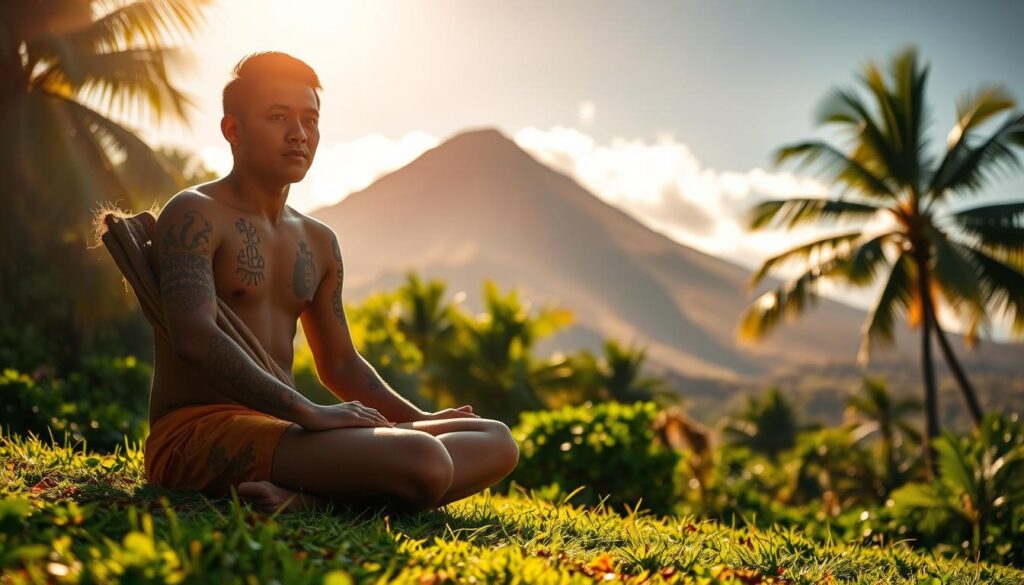
The true power of these marks lies not in their appearance but in the sacred rituals that bring them to life. Every line becomes a bridge between worlds, merging personal stories with ancestral voices through intentional practice.
Understanding Kakau: The Sacred Process
Receiving traditional body art involves more than needles and ink. Artists follow strict protocols—rising before dawn to cleanse tools in the ocean while chanting prayers. This step purifies the space and invites divine energy into the work.
Master practitioner Keone Nunes explains:
“Without specific chants and intentions, you’re just drawing on skin. The meaning comes from connecting to those who walked before us.”
The Importance of Mana, Prayer, and Ancestral Connection
Your design gains significance through shared spiritual energy. Artists transfer their mana—life force—into each tap of the mallet, awakening your inner strength. This exchange creates a three-way bond between you, your community, and nature’s rhythms.
The process transforms your life journey into visible form. As ink settles into skin, it becomes a permanent reminder of belonging—to people, land, and timeless traditions. Every curve whispers aloha ‘āina (love for the land), grounding you in cultural truth.
Your Personal Journey with Hawaiian Tattoos
Embarking on this path requires more than selecting a design—it demands aligning your story with centuries of tradition. Master practitioner Keone Nunes notes: “Protocols vary, but purpose remains constant: connecting ink to ancestral truth.” Your preparation becomes part of the art itself.
Preparation and Mindful Decision-Making
Begin with genealogical research—many wearers spend years studying family histories before committing. Fasting and abstaining from alcohol often precede the process, cleansing both body and intention. These steps ensure your design reflects authentic identity rather than fleeting trends.
Selecting Your Creative Guide
Choose an artist who understands cultural weight, not just aesthetics. Ask about their training—do they collaborate with native practitioners? Review portfolios for designs balancing tradition with personal relevance. For those drawn to vibrant cultural body art, discuss how colors might enhance (or distract from) sacred symbols.
Your journey culminates in marks that honor the past while mapping your future. As the mallet taps begin, remember: these patterns don’t just decorate skin—they awaken stories waiting to be lived.
